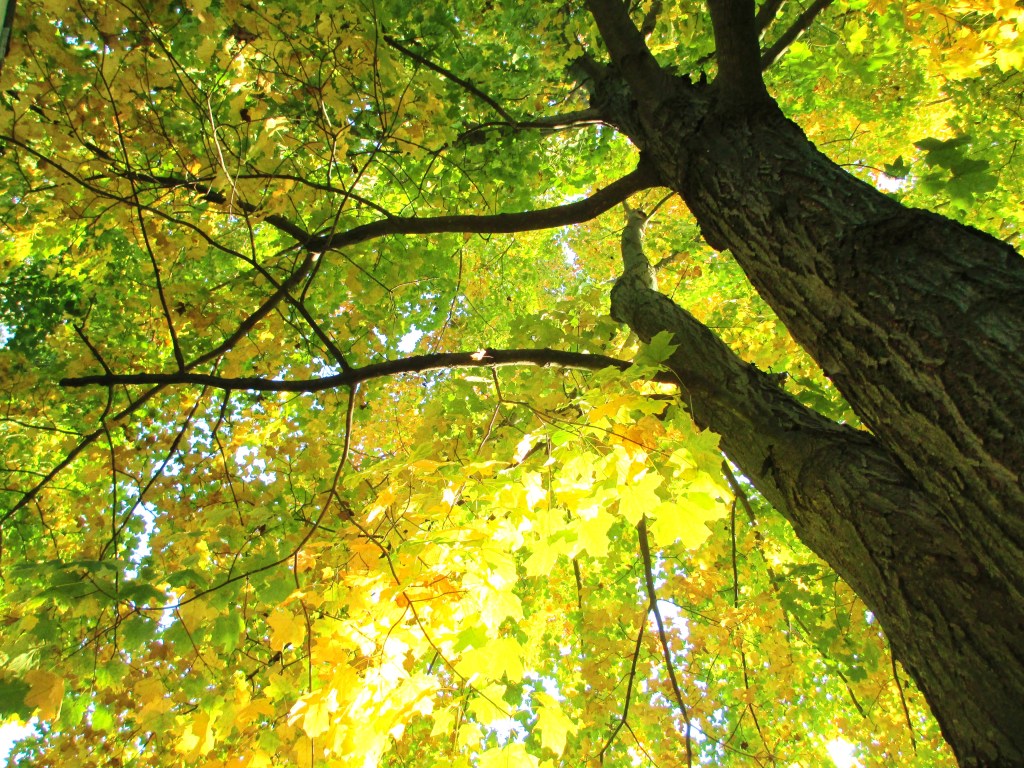
I confess.
This little fellow’s been framed.
Not in the sense in which that characterization is made in my line of work, but in many other ways. Framed so he seems to pop out in bas-relief against a cloudless powder blue sky. His vivid, sharp-edged wintry colors seem to propel him towards the viewer as he bows away from a filmy floral bokeh. On closer inspection, one frond has broken clean through at its elbow: another hint of the season.
He’s frozen in time and space by a rectangle of sky so constrictive that he appears to be craning against and breaking free of its confines. Looking inquisitively down and out of the frame in which he was forever captured.
Only I can tell you who was on tip-toes on a Maine oceanside path on that long-ago morning. Chin tilted up to return this wee Flying Wallenda’s side-eyed glance as he balanced on a crimson frond.
My fingers were so cold they felt welded to my camera. My winter shots tend to be far sparer than the unending rectangular frames which entomb other seasons’ scenes.








In every season, each image’s framing allows viewers to fill in the blanks, based on contextual clues. These may be as concrete as deducing the months in which a given bloom is likely to erupt and flourish in New England. Or as abstract as interpreting a wavering pattern reflected in slightly rippled water on a cloudless day.
Strangely, I’ve written about absent lens artists’ frames more than once before:
Both within and outside the frames [my husband] Jim created each time he sparingly clicked his camera’s shutter, there was love. This was not anthropomorphism–although the scene as female frigates gathered around a scarlet-throated male echoed what I understand to be the premise of a reality show involving the distribution of a limited number of roses.
Inside each frame is something Jim loved and preserved about his window on this world: its brilliant colors and creatures, plants and geological formations, and the spectacular beauty of sights he had never seen before and never would again–at least from this earthly vantage point–on all that grows and erodes and decays and grows again around us.
On the other side of the lens was a man relishing everything about a trip he knew would be his last, with the family he loved and will forever love him. Each of his photos can transport us back to the warmth of that sun, the sounds of sea lions, the feeling of being able to reach out and touch his arm or the back of his shirt as he found himself among winged and earthbound creatures near the end of the visible world and his time in it.
The artist’s frame allows the viewer to recapture the world it holds. It also allows us to see the artist outside of each preserved moment, whether capturing something real or imagined, aspirational, or merely magical . . . .
Art travels in time, sometimes even more readily than we do.
The Company of Ghosts

My winter bird, like my husband’s winter dove and frigates in another hemisphere, surely is long gone in traditional corporeal (and photographable) form. Parca’s creaking scissors have been wielded mercilessly since then. Glorious flighted birds are now pining for the fjords. They’re off the twig, having joined “the bleedin’ choir invisible.”
But he’s also still framed here for you to see and imagine this once present soul, engaging with another being on an icy winter morning.
In the penultimate scene of a five-season show centered on a family mortuary (avert your eyes if you don’t want a spoiler), an artistic daughter takes a photo of older family members seeing her off as she leaves home for the opposite coast. She is a true photographer, and is deliberate in what she seeks to capture in each frame.
Her older brother appears at her side, from his side of the veil, and gently tells her: “You can’t take a picture of this. It’s already gone.”
And it is.
But it’s also still with her, and anyone who truly studies the way she filled her frame.


Great frame filling Stephanie. Beautiful images.
Thank you, Anne!
😊
The commentary in your posts always makes me stop and then re-read and think even further Stephanie. There’s no better compliment IMHO that a writer might receive. Your images as always are glorious (my favorite this week is the pattern in the rippled water but they are all wonderful.
There is indeed no better compliment! Thank you so much. The rippled water is one of my favorites–and underscores what I think is the fundamental photographer’s option in filling each frame: only the photographer (and anyone who may have accompanied the photographer when the snap was made) can choose what secrets to keep outside the frame. And whether to ever share those secrets, or let only the photo speak.
Fabulous photos. Love the pink flower.
Thank you! I have a weirdly specific memory, and I took that picture on a completely cloudless day across a pond that turned silver from the high afternoon sun as I was waiting to pick up my youngest daughter from school. It’s weird how each photo can help us travel back in time.
Likewise with many of my pictures. Wonderful memory.
Stunning captures of these birds!
Thank you!
I also love these tress, leaf, flower… selections! Incredibly beautiful!
Thank you, Amy!
Beautiful images. That tree silhouetted agains the sunrise(set) painted clouds is my favorite. I am looking at your “little fellow” and see a speech bubble above his curious gaze that says, “For heaven’s sake, put that thing down and go get some gloves!” I like the way your frame your thinking. Cheers!
“you” frame
I find the tree strangely soothing–maybe it’s the pastels taking the neon colors’ place, and the sky waves.
I think you are totally correct in reading the bird’s thoughts. I should know that judgmental look anywhere (given the day job).
😂🤣😆
Your galleries are always fantastic, Stephanie, and this one is no different. Beautiful photos and post.
Thank you, Sofia!